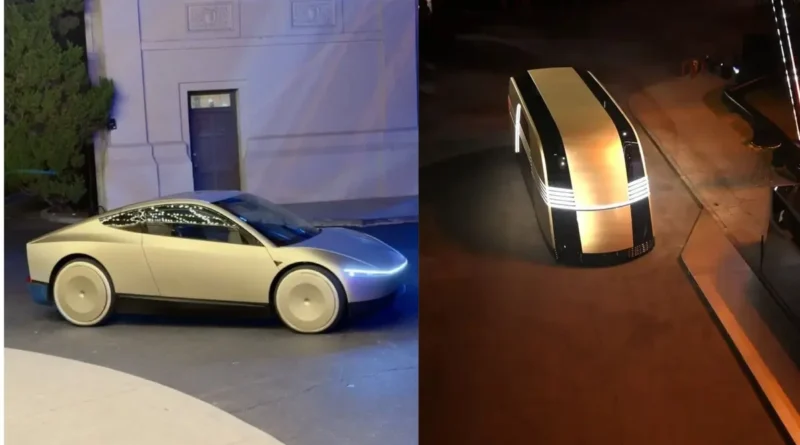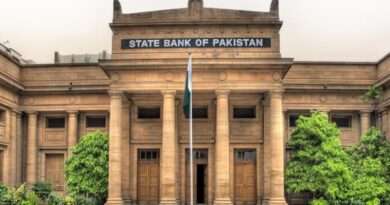Tesla’s Elon Musk Unveils Futuristic Robotaxi and Robovan
|
Getting your Trinity Audio player ready...
|
At a highly anticipated event, Tesla CEO Elon Musk revealed two new groundbreaking vehicles: a robotaxi and a robovan. The robotaxi, with its sleek design featuring two gull-wing doors and no steering wheel or pedals, is set to enter production in 2026 and will be priced at under $30,000. Alongside the robotaxi, Musk also introduced a larger self-driving vehicle, dubbed the Robovan, designed to transport up to 20 passengers, marking Tesla’s shift from a mass-market automaker to a robotics manufacturer.
Cybercab and Robovan: Tesla’s Autonomous Vision
Musk arrived on stage in a futuristic “Cybercab,” a fully autonomous vehicle that will be a part of Tesla’s robotaxi fleet. He emphasized that the cost of operation will eventually be as low as 20 cents per mile, with inductive charging technology, meaning no physical plugs will be needed to charge the vehicle. This bold move positions Tesla at the forefront of the autonomous vehicle revolution. Musk confidently declared, “The autonomous future is here,” showcasing a fleet of 50 fully autonomous cars, including the Cybercab and Model Y, at the event.
Tesla’s AI-Driven Approach
Unlike other companies venturing into the robotaxi market, which often rely on expensive hardware like lidar, Tesla’s robotaxis are powered entirely by artificial intelligence and cameras. Musk’s approach, though cost-effective, has been met with skepticism by investors and analysts due to the technical challenges and regulatory hurdles that come with relying solely on AI. Despite these concerns, Musk remains optimistic, believing that AI will drive the future of autonomy in vehicles.
Robovan: Expanding Tesla’s Self-Driving Fleet
In addition to the robotaxi, Musk introduced the Robovan, a larger autonomous vehicle capable of carrying up to 20 passengers. The Robovan represents Tesla’s vision of self-driving public transportation and was showcased alongside Tesla’s Optimus humanoid robot at the event. Both the robotaxi and Robovan are part of Musk’s larger plan to build a fleet of self-driving Tesla vehicles, which passengers can hail via an app. Tesla owners will also be able to list their vehicles as robotaxis, creating a new income stream for individuals.
“We, Robot” Event and Musk’s AI Ambitions
The event, held at Warner Bros. Studios in Los Angeles, was titled “We, Robot”—a nod to Isaac Asimov’s famous science-fiction stories. Musk used the occasion to reiterate his belief that Tesla should be regarded as an AI robotics company rather than just a car manufacturer. The event attracted a mix of investors, analysts, and Tesla enthusiasts, though some attendees were left disappointed by the lack of concrete timelines for the production and regulatory approval of the robotaxi.
Investor Concerns and Missed Promises
While the event showcased futuristic technology, investors were left wanting more specifics regarding the rollout of Tesla’s robotaxis. Dennis Dick, an equity trader at Triple D Trading, voiced his disappointment, stating, “While everything looks impressive, there’s a lack of concrete timelines.” I think the market wanted more definitive information.” Musk acknowledged that he tends to be optimistic with time frames, but many are wary, given Tesla’s history of missed deadlines.
Challenges in the Robotaxi Market
Musk had previously promised operational robotaxis by 2020, but after missing that target, he redirected Tesla’s focus to developing these autonomous vehicles. Tesla now faces stiff competition in the robotaxi market, with companies like Alphabet’s Waymo, General Motors’ Cruise, Amazon’s Zoox, and several Chinese firms also working to crack the industry. The complexity of the technology, combined with regulatory barriers, has led to billions in losses for many players in the field, with some forced to exit the market entirely.
Autonomous Driving and Regulatory Scrutiny
Tesla’s Full Self-Driving (FSD) system, which currently requires constant driver attention, has faced legal and regulatory challenges, including scrutiny over fatal accidents involving the technology. Despite this, Musk announced plans to begin fully autonomous, unsupervised FSD operations in Texas and California in 2025, using Tesla’s Model 3 and Model Y vehicles. However, he did not confirm whether the robotaxis would rely on new technology or continue to use FSD.
The Road Ahead for Tesla’s Autonomous Future
Elon Musk’s ambitious vision for a fleet of fully autonomous Tesla vehicles is poised to reshape the future of transportation. While challenges remain—both technically and regulatorily—Tesla’s robotaxi and Robovan could revolutionize urban mobility, making self-driving technology more accessible to the public. Whether Tesla can meet its production targets and overcome the hurdles ahead will determine how quickly this autonomous future arrives.




